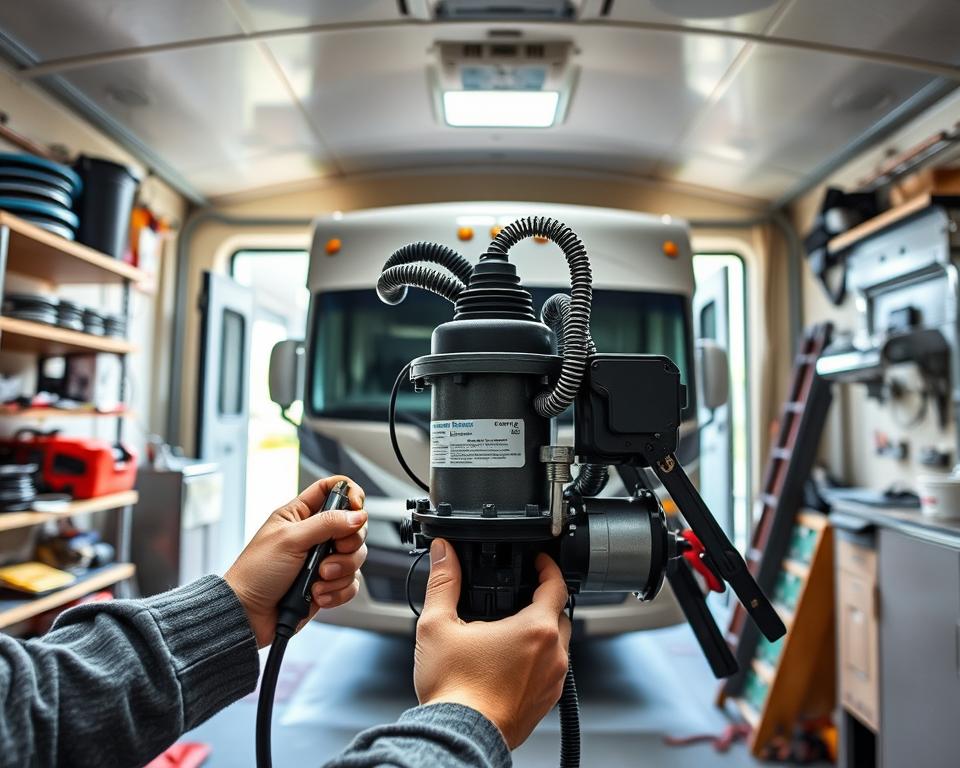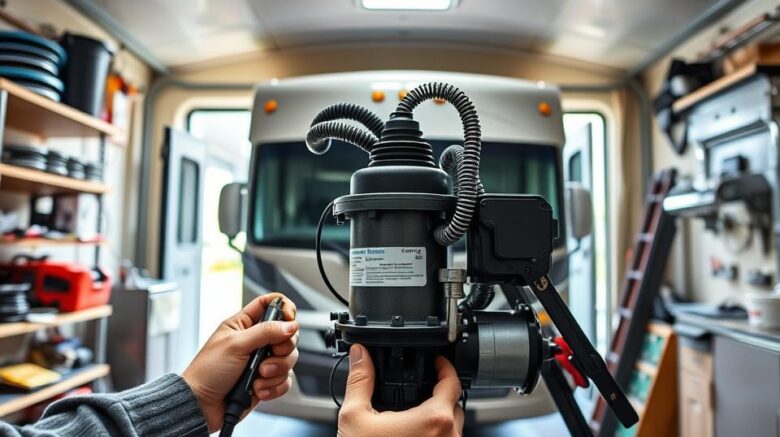RV Septic Tank Pumping: Essential Maintenance Tips
Think about the fallout from overlooking your RV’s septic system. Many RV owners find the idea of septic tank pumping daunting. However, recognizing the need for regular servicing is crucial. These steps preserve your camping joy and avoid expensive repairs. Mastering correct waste handling is fundamental to your system’s longevity. We’ll share vital insights on RV sewer pump service near me, including best practices and tips to keep your system running smoothly.
Getting to Know Your RV’s Waste Setup
All RVs come with a built-in waste management system. The system comprises a black water tank (toilet), a gray water tank (sinks/showers), and a fresh water tank. Knowing these components prevents clogs and ensures efficient cleaning.
A series of drain lines and vent pipes balance waste flow and airflow. A good grasp prevents clogs and nasty odors. This knowledge ensures hassle-free trips and reliable waste handling.
Regular checks and care keep your tanks in top shape. Frequently checking tank levels and emptying on time preserves comfort. Proper upkeep extends tank life and enhances every journey.
Importance of Regular RV Septic Tank Pumping
Routine sewage draining preserves functionality and hygiene. Leftover solids lead to smells and clogs, spoiling your trip. A full tank can produce embarrassing backups. These incidents mar your travel enjoyment.
Skipping pump-outs leads to pricey repairs. System failures cause leaks and wear out parts prematurely. Timely emptying keeps your plumbing running smoothly. It prevents unwelcome surprises and roadside emergencies.
Staying on top of maintenance wards off backups. Investing in pump-outs shows you care about your RV. Your trips become more relaxing. By sticking to a dump schedule, you’ll relish the outdoors worry-free.
Finding the Right Dump Frequency
Determining dump intervals needs careful thought. Common guidance suggests a 3–5-day window. However, it shifts based on tank volume and number of users. Knowing when to pump is vital for managing RV wastewater.
Empty once the black tank reaches roughly 66% full. It ensures good drainage and cuts down on odors. Skipping this leads to blockages and smells that spoil the trip.
Many elements can affect how often you pump:
- Number of people on board
- Length of stay
- Type of waste generated
- Tank capacity
Scheduling prevents on-the-road crises. Sync with any public dump station hours. Knowing your patterns predicts when to dump.
| Usage Scenario | Pumping Frequency |
|---|---|
| Weekend Getaway (2 people) | Every 3–4 days |
| Long Stay, Four to Six Occupants | Every 2–3 days |
| Seasonal Use, Two to Four Campers | Weekly or Bi-Weekly |
Monitor fill levels and usage patterns. This proactive stance ensures enjoyable travel.

Proper Tank Dumping Techniques
Correct dumping preserves system health and prevents issues. Always empty the black tank first to protect the gray tank. This prevents dirty water from fouling the clean.
Using a high-quality hose minimizes leaks and ensures smooth dumping. Secure all fittings firmly to avoid leaks. Once both tanks are clear, rinse the black tank thoroughly. This removes residue and preps the tank for next time.
Know where dump stations are located. Being prepared saves time on the road.
To summarize, use these steps:
- Empty the black water tank first.
- Use a top-quality sewer hose.
- Flush the black tank thoroughly after emptying.
- Plan your dump station locations.
These tips refine your waste disposal process.
Tank Handling and Upkeep Best Practices
Grasping correct handling of black and gray tanks ensures system health. Maintain a bit of water in the black tank to aid waste decomposition.
Don’t flush wipes, feminine products, or paper towels. Use only RV-compatible paper. Inspect tanks often to catch problems early.
Occasional treatments boost system performance. These products balance enzymes and bacteria for efficient decomposition. Such measures keep your tanks operating at their best.
- Check for leaks and damage often.
- Apply RV-specific chemical treatments.
- Keep vents clear to avoid odors.
Adhering to these practices safeguards your system. It also boosts your camping enjoyment.
How to Pump Efficiently
To pump your tank effectively, follow a methodical approach. Proper disposal prevents issues—only dump at approved stations. Know your tank’s capacity to avoid overflows.
Check tank indicators regularly to time pump-outs. This extends tank life and enhances trip comfort. A planned maintenance routine keeps everything running smoothly.
Flush well after every emptying. It ensures each dump is cleaner than the last. Such tactics keep your rig in top shape and improve your travel experiences.
Avoid These Septic System Errors
Maintaining your system is vital for uninterrupted camping. Not using enough water in the black tank leads to buildup. Adequate water use breaks down solids efficiently.
Wrong flushables cause havoc—never flush wipes or towels. Avoid non-dissolvable products like feminine hygiene items. Such mistakes can damage plumbing and inflate repair bills.
Leaving the black valve open too early is a mistake. Open valves let water out but hold solids, causing residue. This ensures solids clear on each dump.
Awareness of these errors boosts system longevity. Steering clear of these mistakes ensures durable performance.
When to Call in Professional RV Waste Disposal Services
Recognizing the need for expert help extends tank life. Lingering smells can mean serious tank problems. Tanks that empty sluggishly hint at internal blockages.
Visible residue at dump points requires attention. It often calls for a deep professional clean. Pros blast away blockages to restore smooth flow.
Routine professional inspections catch hidden issues early. Early intervention avoids expensive failures. Hiring qualified technicians saves time and money long term.
Sustainable Waste Management Strategies
Smart upkeep ensures lasting system performance. Scheduled dumps preserve longevity and operation. Routine rinses clear residue and stave off expensive breakdowns.
Adopting sanitation routines protects your system. Inspecting connections stops leaks before they spread. Choosing eco-friendly treatments avoids damage.
Keep these habits in mind:
- Stick to a pump-out timetable.
- Rinse often to remove solids.
- Sanitize twice a year.
- Inspect parts frequently for wear and tear.
Investing in prevention brings peace of mind. Routine service lets you focus on the scenery, not your sewer.
Final Thoughts
Good septic care ensures enjoyable trips. Knowing system function and cleaning steps stops issues. Regular black tank maintenance improves efficiency. It enhances every mile.
Consistent inspections and care deliver trouble-free trips. Dependable sewage service backs every adventure. These routines prime your rig for future rides. So you can focus on making memories, not dealing with tanks.
